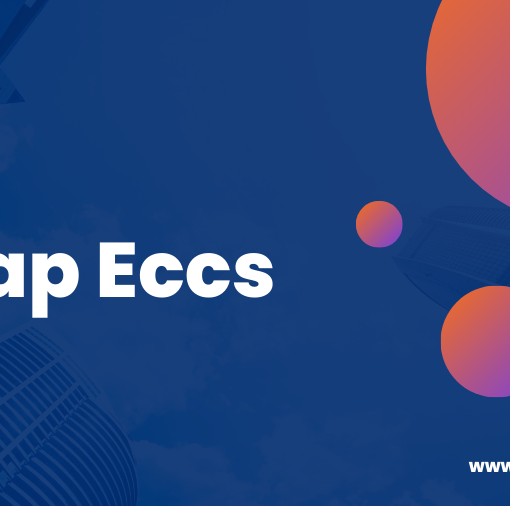What is SAP HANA Enterprise Cloud?
SAP HANA Enterprise Cloud (HEC) is a private cloud hosting service for SAP HANA and related applications that is maintained by SAP.
SAP manages SAP HEC services and provides the infrastructure. On a single instance of the SAP HANA in-memory database platform, the cloud service hosts SAP Business Suite software, which comprises SAP HANA custom and out-of-the-box apps and SAP NetWeaver Business Warehouse software. In comparison to on-premises HANA deployments, this decision was made to provide clients with an easier, more comprehensive approach to implementing SAP HANA.
SAP’s IaaS (infrastructure-as-a-service) product is called the HEC (HANA Enterprise Cloud). HEC is a privately managed cloud solution that uses Hyperscaler or SAP data centers to run in trusted data centers. It depicts the future of ERP while attaining previously unthinkable levels of visibility, agility, and TCO (total cost of ownership). You can conduct SAP-based operations in its hosted environment as an IaaS solution, with all benefits of shifting your systems to the cloud.
HEC will help you get closer to standard code in your software landscape. This significantly reduces the amount of time, money, and resources required to gain access to your program. HEC also enables you to effortlessly adjust or scale your business model while allowing you to innovate at your own pace.
SAP HANA Enterprise Cloud customer edition
SAP, a leader in enterprise resource planning (ERP) software solutions for corporate operations and customer relationship management, has announced the launch of SAP HANA Enterprise Cloud, client edition. Customers can use the company’s private cloud SAP HANA Enterprise Cloud and license subscription while keeping their SAP software landscape and data on-premise, within their own data center environment, with this new deployment approach.
The new solution, according to SAP, is being offered in collaboration with important global hardware infrastructure-as-a-service (IaaS) suppliers, including Hewlett Packard Enterprise (HPE).
HPE will supply, install, and manage the required infrastructure for the customer’s landscape in a secure environment via the HPE GreenLake platform. On the other hand, SAP will contribute its software through the SAP HANA database, including the full SAP HEC catalog of apps.
What is SAP HEC Customer edition?
SAP HEC is SAP’s ‘quickest road to the intelligent enterprise,’ allowing businesses to realize the full potential of SAP HANA in the cloud. It’s a completely scalable and secure privately managed cloud solution that includes everything you need to get started:
- a model of architecture
- a scalable and well-coordinated set of managed services
- a comprehensive, end-to-end service-level agreement with a 99.5% service-level guarantee (SLA).
- Pre-built, creative tools for quick implementation.
In response to customer needs and demands, SAP has been actively evolving its cloud offering. The company formerly provided the option of running SAP HANA Enterprise Cloud in SAP data centers or on hyperscalers. Several customers also mentioned that SAP data centers and hyperscaler infrastructure alternatives were limited or unavailable to them.
This is why the new deployment model was created: to provide customers with a turnkey solution in their data center. The customer edition, according to SAP, allows customers to translate from a capital expense to an operational expense (OPEX) business model. SAP Cloud Application Services will also support the day-to-day operation of the apps and assist customers with SAP S/4HANA deployment.
Benefits of SAP HEC
Optimized availability
Companies may gain high availability for their IT and application landscapes with SAP HEC. Despite this, they retain control over the SAP HANA environment deployment. Service levels are also superior to the on-premise option.
Relief and risk minimization
Thanks to SAP HANA Enterprise Cloud, companies have to spend significantly fewer resources on the day-to-day management of SAP HANA. IT staff have more time to focus on digital transformation and future initiatives now that they’ve been relieved of some of their responsibilities. Furthermore, the risks associated with HANA deployment are “outsourced.”
Performance through hyperscaler integration
SAP HEC allows you to integrate particular hyperscaler platforms into your cloud environment. It is possible to combine AWS (Amazon Web Services), Microsoft Azure, and Google Cloud Platform, for example (Google Cloud Platform).
This type of hybrid environment enables SAP S/4HANA Cloud to be designed, configured, integrated and deployed quickly.
Future viability and scalability
In general, SAP HEC is a future-proof solution that allows businesses to minimize complexity and prepare for the challenges of digitization, even while they are experiencing rapid expansion.
Furthermore, SAP HEC enables the customization of current systems as well as access to over 1,000 premade SAP partner applications. This means that cloud-based inventions and improvements can be advanced even further.
SAP HANA Enterprise Cloud on Azure
SAP HEC is compatible with AWS and Microsoft Azure public cloud services. It claims that this gives clients the option of deploying HANA on a secure public cloud infrastructure. In 2017, SAP HEC was made available on both platforms.
SAP and Microsoft also have partnered to run S/4HANA on Azure for some internal activities at each firm. According to SAP and Microsoft, Microsoft runs SAP S/4HANA Finance on Azure via HEC and connects S/4HANA with Azure AI and analytics services.
In 2017, SAP migrated more than a dozen of its business systems onto Azure, including the S/4HANA system supporting Concur.
SAP HANA Enterprise Cloud vs SAP Cloud Platform
The differences between SAP HEC and SAP HANA Cloud Platform (HCP) are often misunderstood. Both products have different service models, despite the fact that they are both based on the HANA cloud platform.
SAP HCP provides a platform-as-a-services (PaaS) technology for app development. Meanwhile, HEC is a hosted infrastructure-as-a-service technology that allows enterprises to execute SAP-based operations.
What kind of cloud solution is SAP HANA Enterprise Cloud?
SAP HANA Enterprise Cloud (HEC) is a fully managed private cloud solution provided by SAP for running SAP HANA, its in-memory database and application platform. It is designed to offer customers the benefits of cloud computing while also catering to the specific requirements of SAP applications and data.
Here are some key characteristics of SAP HANA Enterprise Cloud:
- Private Cloud: SAP HANA Enterprise Cloud is a private cloud solution, meaning the cloud infrastructure is dedicated to a single customer or organization. This contrasts with public cloud solutions, where multiple customers share the same underlying infrastructure.
- Managed Service: SAP HANA Enterprise Cloud is a fully managed service provided by SAP. SAP takes care of the infrastructure setup, maintenance, and management, including hardware, network, storage, and security aspects. This allows customers to focus on their core business and SAP application usage without worrying about infrastructure management.
- SAP HANA Deployment: The primary purpose of SAP HANA Enterprise Cloud is to host and manage SAP HANA databases and applications. It provides a platform for running SAP’s suite of enterprise applications, including SAP S/4HANA, SAP Business Suite, SAP Business Warehouse, and other SAP software that utilizes the SAP HANA database.
- High Performance: SAP HANA Enterprise Cloud leverages the power of SAP HANA’s in-memory computing capabilities, enabling high-speed data processing and real-time analytics. This is especially beneficial for businesses that require rapid data processing and analytics for decision-making.
- Customization and Isolation: As a private cloud solution, SAP HANA Enterprise Cloud offers a higher level of customization and isolation compared to public cloud environments. Customers can have more control over their configurations and tailor the environment to meet their specific requirements.
- Hybrid Integration: While SAP HANA Enterprise Cloud is a private cloud solution, it can be integrated with other cloud or on-premises systems through hybrid cloud architectures. This enables organizations to create hybrid IT landscapes and leverage the benefits of both cloud and on-premises solutions.
- Security and Compliance: SAP HANA Enterprise Cloud follows strict security practices and compliance standards to protect customer data and ensure data privacy. As a managed service, SAP takes responsibility for security measures and updates.
- Pay-Per-Use Model: SAP HANA Enterprise Cloud typically operates on a pay-per-use pricing model, where customers pay based on their resource consumption and the services they require. This can provide cost flexibility and scalability as usage patterns change over time.
SAP HANA Enterprise Cloud is designed to offer a combination of the benefits of cloud computing (e.g., scalability, managed services, cost efficiency) with the specific needs of running SAP HANA-based applications in a dedicated and secure environment. It allows organizations to focus on their core business operations while leveraging the performance and analytical capabilities of SAP HANA.





